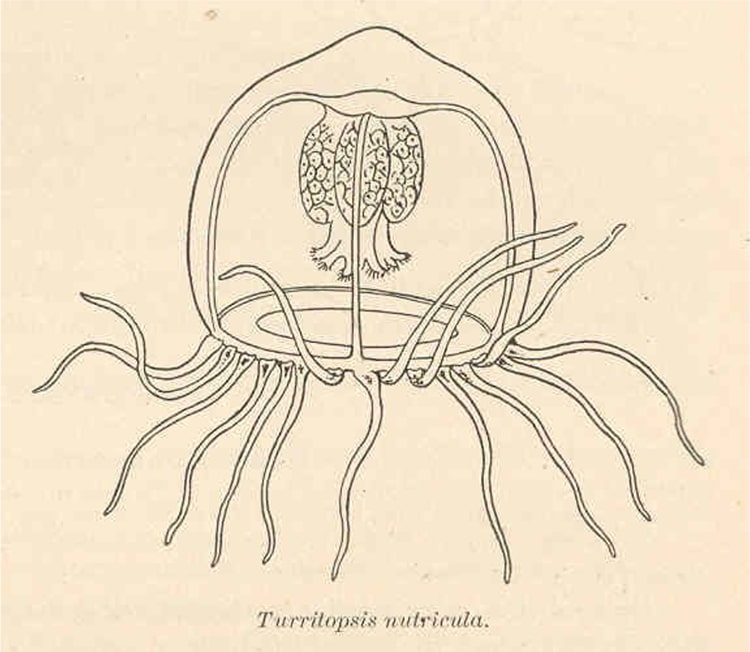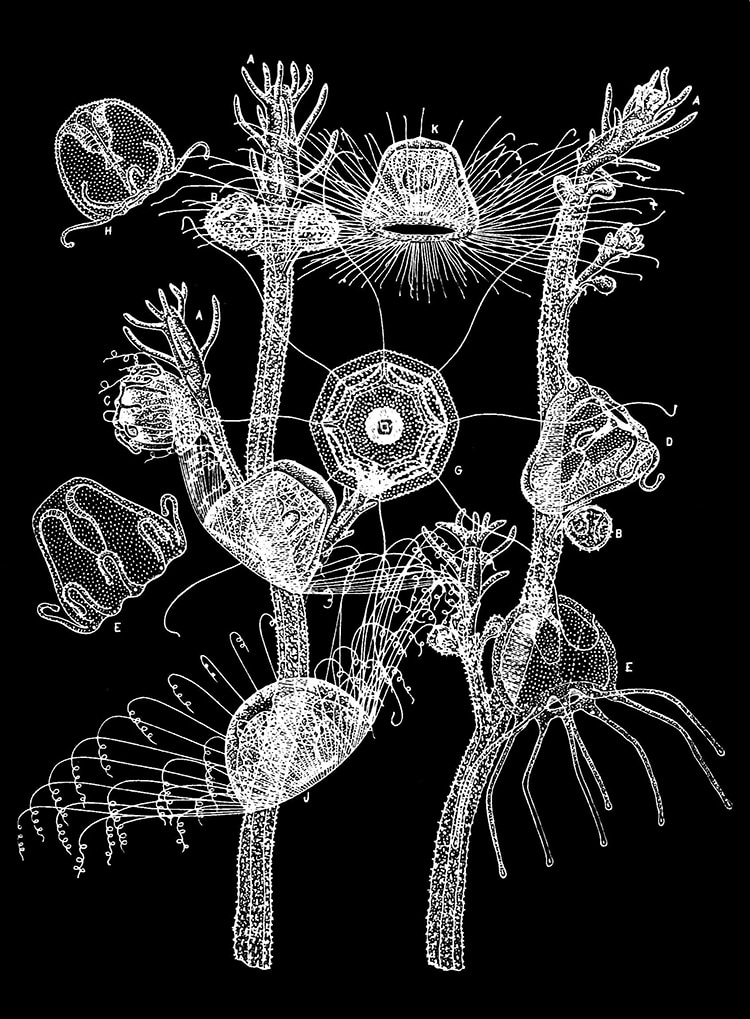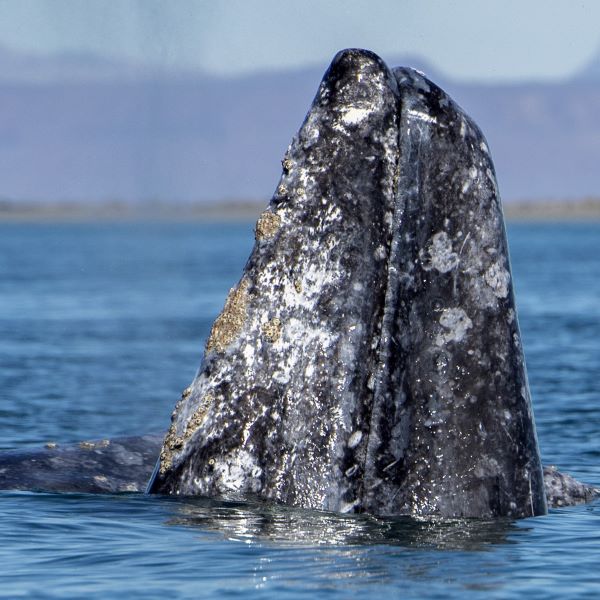
The immortal jellyfish, Turritopsis nutricula. (Photo: Freshwater and Marine Image Bank, Public domain)
Scientists have identified over 2,000 species of jellyfish—with many thousands more speculated to still be unknown. These incredibly unique beings come in a variety of shapes, sizes, and colors. Particularly incredible is the tiny Turritopsis dohrnii. Smaller than a human fingernail, it is known as the immortal jellyfish for its endless lifecycle. As described in the Proceedings of the National Academy of Sciences, scientists have recently uncovered the jelly's gene which could hold keys to immortal life.
A jellyfish begins life as an egg and grows into a larva, which then lodges itself on a rock and grows into finger-like polyps. These polyps eventually detach into jellyfish known as a medusa. The immortal jellyfish differs from other species. Instead of dying, it can morph back into a polyp. Later, it blossoms once more into a jellyfish. This cycle can continue indefinitely.
Why is the immortal jellyfish able to recycle itself? Scientists have recently announced that the jelly has double the number of genes as other closely related jellies for repair and protection. “While aging affects most living organisms, the hydrozoan Turritopsis dohrnii is the only species able to rejuvenate repeatedly after sexual reproduction, becoming biologically immortal,” the paper authors write. “We have identified variants and expansions of genes associated with replication, DNA repair, telomere maintenance, redox environment, stem cell population, and intercellular communication.”
When it needs to repair itself or rejuvenate, the immortal jellyfish can reabsorb its tentacles, sink, and attach itself to the seafloor once more as a polyp. The jelly's telomeres, a sequence of DNA at the end of a chromosome which functions like the plastic at the end of a shoelace, do not become shorter over time. Typically, as cells divide, the telomeres become shorter. These are just several ways that the immortal jellyfish might offer insight into aging—and even immortality. Scientists hope future discoveries will shed light on techniques which might stave off aging and its symptoms, such as degenerative diseases.
Scientists have uncovered the gene that gives the immortal jellyfish its unnaturally long life.

The Turritopsis life cycle as illustrated in the late 19th century. (Photo: Wikimedia Commons, Public domain)
The jellyfish can re-do its own lifecycle, offering stunning insight into how knowledge of regenerative genes might be used in medicine.
h/t: [Futurism]
Related Articles:
Stunning New Red Jellyfish Species Photographed in the Deep Sea
Very Rare Jellyfish Is Captured on Video for the First Time
Rare Deep-Sea Sighting of a Giant Phantom Jellyfish Captured on Video From 3,200 Feet Below
Stunning Footage Captures Rare Sighting of a Psychedelic Jellyfish in the Pacific Ocean






















































































